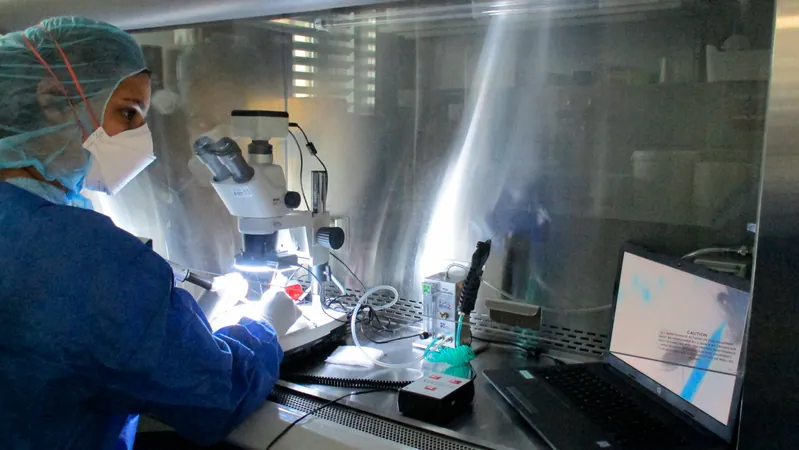
Hubble Uncovers Shocking Link Between Black Hole Jets and Stellar Eruptions!
2024-09-27
Author: Sarah
Groundbreaking Discovery by Hubble
In a groundbreaking discovery, NASA's Hubble Space Telescope has revealed that there are twice as many novae—explosive stellar eruptions—occurring near the powerful jet launched by the supermassive black hole at the heart of the giant galaxy M87 compared to other regions. This astonishing finding suggests a significant relationship between the jet's energetic outflows and the dynamics of nearby star systems.
The M87 Black Hole
The central black hole of M87, a colossal entity weighing in at 6.5 billion solar masses, is surrounded by a disk of turbulent matter. As it gobbles up more material, it ejects a 3000-light-year-long jet of plasma traveling at nearly the speed of light. These jets not only pose a threat to anything caught in their path, but new research indicates that their influence may lead to a surge in nova activity in the surrounding stellar neighborhood.
Impact on Nova Activity
Researchers hypothesize that the jet may be impacting double-star systems that are ripe for nova eruptions, potentially leading to interactions that facilitate these explosive events. Notably, the increased number of novae could stem from either a higher concentration of susceptible star systems near the jet or an enhanced eruption rate among these stars.
Potential Mechanisms
According to Alec, one of the researchers involved, 'It’s possible that the jet is somehow moving hydrogen fuel toward the white dwarfs, prompting them to have more frequent eruptions. This could be due to a physical push or even the pressure of light emitted from the jet enhancing mass transfer rates.'
Another theory posits that the jet could inadvertently heat the companion stars of these white dwarfs, encouraging them to overflow with more hydrogen. However, calculations suggest that such heating is insufficient to account for the observed increase in nova activity.
Comments from Experts
Michael Shara from the American Museum of Natural History commented, 'While previous studies hinted at increased activity around the M87 jet, Hubble's findings have added more weight and clarity to these assertions with stronger statistical backing.'
Hubble's Journey of Discovery
Since its launch in 1990, Hubble has been a key player in exploring the depths of space. Early observations of M87 using its original Faint Object Camera revealed intriguing transient events indicating potential nova eruptions. However, the narrow field of view hindered direct comparisons between the jet and surrounding areas. Persistent exploration has now paid off, as Hubble has collected compelling evidence over nine months, observing this exciting region every five days to track nova activity.
Astounding Results
The results were astonishing: in just one third of M87 that Hubble could observe, a total of 94 novae were recorded. Hubble's clear imaging has made it the only option capable of detecting these events amid the brilliance of M87's core.
Commonality of Novae
Novae are surprisingly common phenomena, with one occurring in M87 almost every day. When you consider that there are at least 100 billion galaxies in our observable universe, this translates to an astounding 1 million novae erupting every second somewhere in the cosmos.
Implications of the Discovery
This revelation not only deepens our understanding of the complexities of galaxy evolution but also raises critical questions about the interactions between supermassive black holes and their host galaxies. As researchers continue to unravel the mysteries of our universe, findings like these underscore the unparalleled potential of Hubble in expanding our cosmic knowledge. Stay tuned, as we delve deeper into the enigmas of space!



 Brasil (PT)
Brasil (PT)
 Canada (EN)
Canada (EN)
 Chile (ES)
Chile (ES)
 España (ES)
España (ES)
 France (FR)
France (FR)
 Hong Kong (EN)
Hong Kong (EN)
 Italia (IT)
Italia (IT)
 日本 (JA)
日本 (JA)
 Magyarország (HU)
Magyarország (HU)
 Norge (NO)
Norge (NO)
 Polska (PL)
Polska (PL)
 Schweiz (DE)
Schweiz (DE)
 Singapore (EN)
Singapore (EN)
 Sverige (SV)
Sverige (SV)
 Suomi (FI)
Suomi (FI)
 Türkiye (TR)
Türkiye (TR)